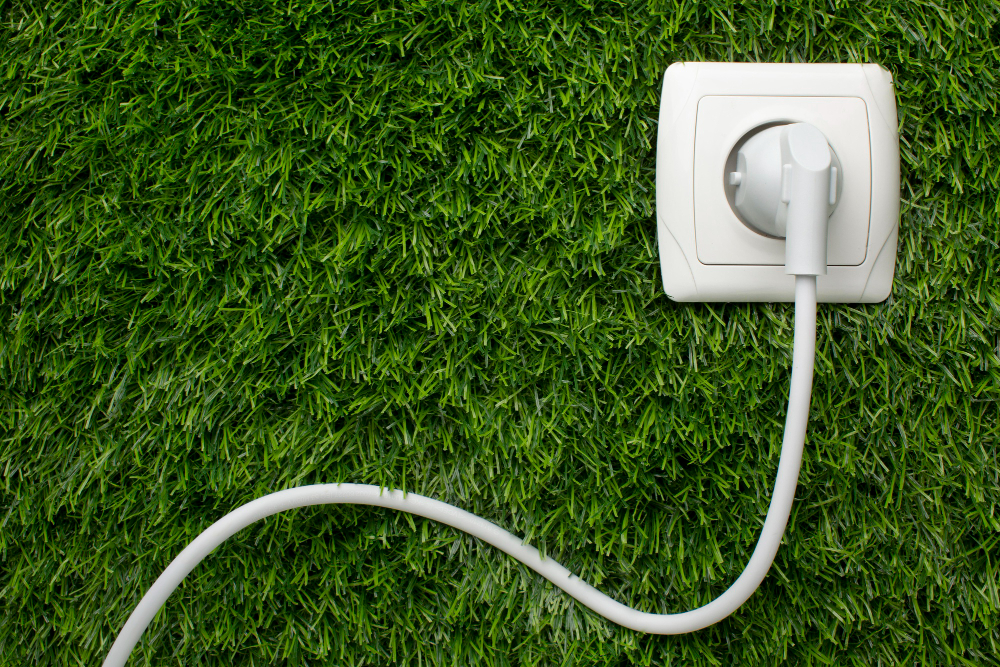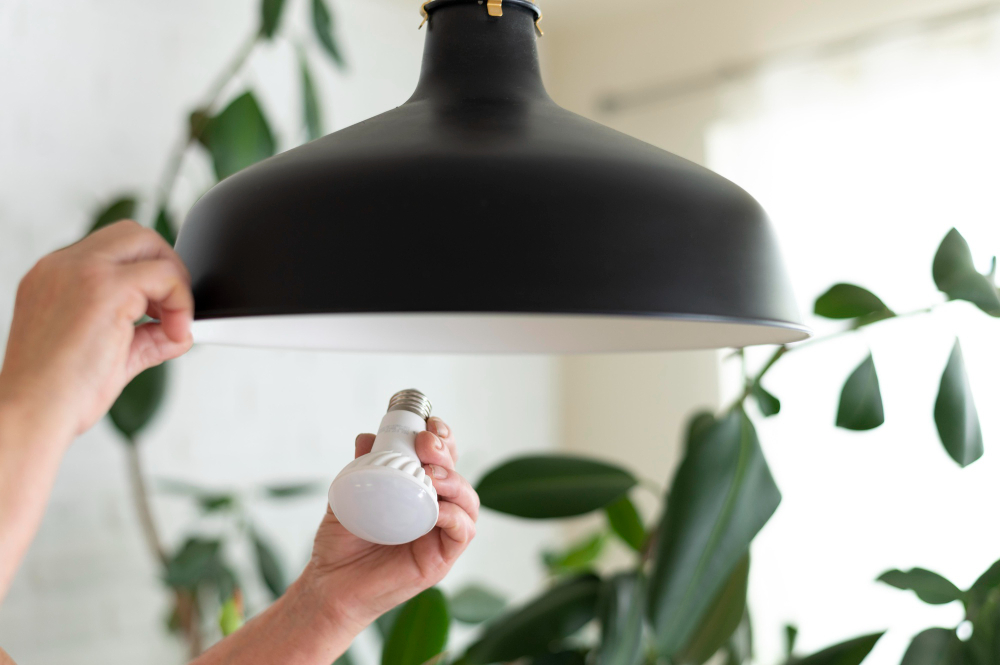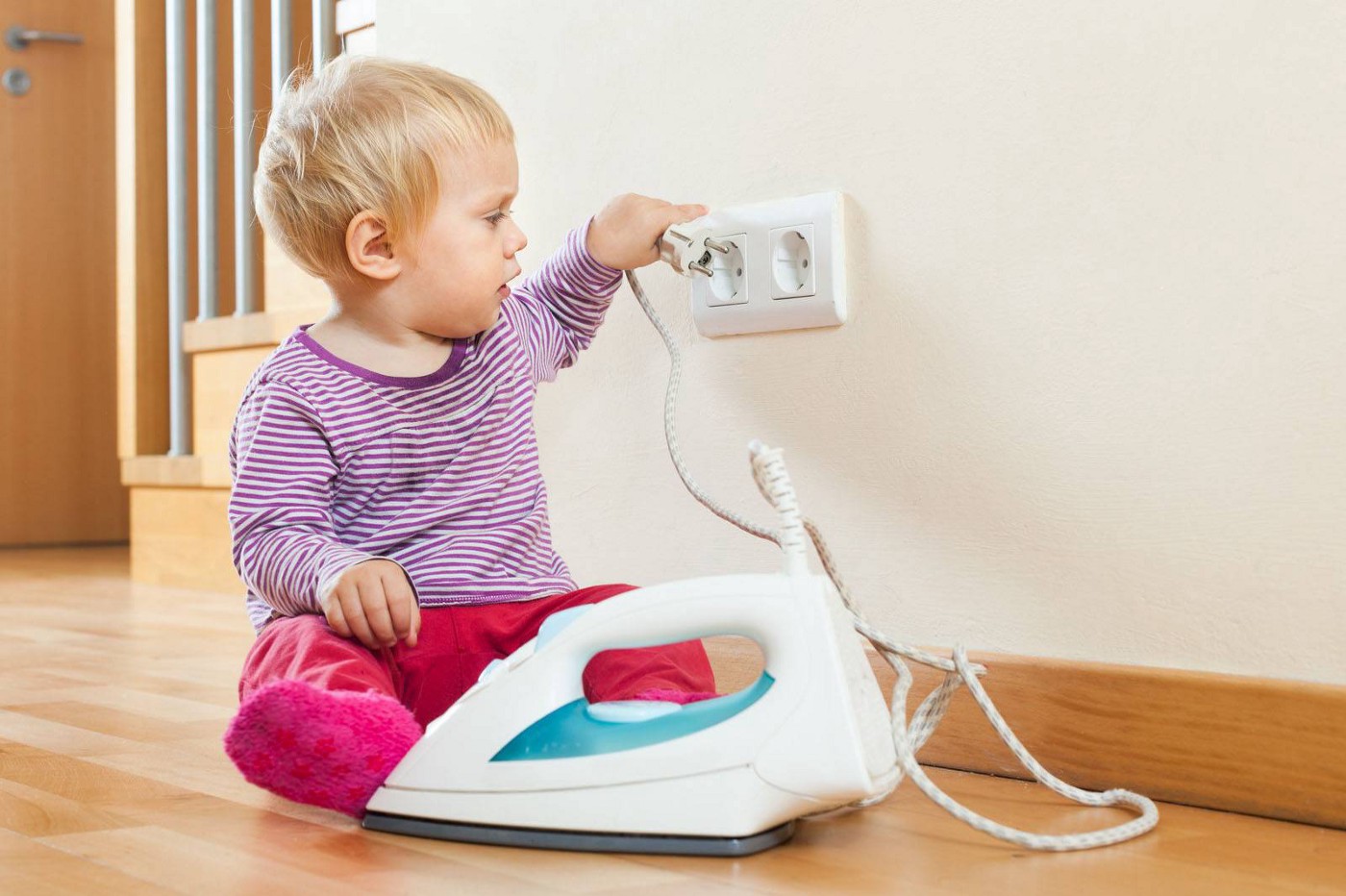20 Nama Peralatan Listrik Lengkap dengan Fungsinya, Bisa Ditemukan di Rumah dan Kantor

Peralatan listrik sangat berguna karena keberadaannya membuat kita bisa menikmati kehidupan dengan nyaman dalam aktivitas sehari-hari. Meskipun sering berinteraksi dengan berbagai peralatan listrik, masih banyak yang belum tahu nama serta fungsinya. Padahal, setiap perangkat listrik memiliki tugas yang berbeda-beda dan masing-masing penting untuk keamanan dan efisiensi penggunaan listrik di rumah.
Dengan mengetahui jenis dan fungsi masing-masing peralatan listrik, Anda dapat mengidentifikasi dan menangani masalah yang berpotensi terjadi pada sistem kelistrikan yang bisa dipicu oleh peralatan listrik tersebut. Berikut adalah 20 peralatan listrik utama, lengkap dengan fungsinya yang wajib Anda ketahui.
Baca Juga: 6 Penyebab Lonjakan Tegangan Listrik, Bagaimana Cara Mencegahnya?
20 Peralatan Listrik Lengkap dan Fungsinya
1. Sakelar
Sakelar adalah perangkat yang digunakan untuk menghidupkan atau mematikan aliran listrik ke perangkat atau lampu. Biasanya ditemukan di dinding ruangan, sakelar membuat penggunanya dapat mengontrol peralatan listrik dengan mudah. Cara kerja sakelar adalah dengan membuka atau menutup sirkuit listrik. Ketika sakelar dalam posisi "on", sirkuit akan terhubung dan aliran listrik mengalir ke perangkat. Sebaliknya, ketika sakelar dalam posisi "off", sirkuit terputus dan aliran listrik berhenti.
2. Stopkontak
Stopkontak adalah alat yang digunakan untuk menyambungkan peralatan listrik dengan sumber listrik. Biasanya dipasang di dinding dan dapat menampung satu atau beberapa steker. Stopkontak menyediakan aliran listrik dari sistem kelistrikan rumah ke perangkat yang menggunakan steker. Dengan menyambungkan steker ke stopkontak, aliran listrik dapat mengalir dan membuat perangkat berfungsi.
3. Steker
Steker adalah bagian dari perangkat listrik yang dihubungkan ke stopkontak untuk mengalirkan arus listrik. Dari bentuknya, steker memiliki dua atau tiga pin yang dimasukkan ke dalam lubang stopkontak. Pin-pin itu terhubung dengan kabel listrik dari perangkat, menghubungkan aliran listrik ke perangkat saat steker terhubung ke stopkontak.
4. Kabel
Kabel adalah penghantar listrik yang mentransfer energi dari satu titik ke titik lain. Isi kabel adalah konduktor yang dilapisi dengan isolasi. Kabel menghantarkan aliran listrik dari sumber (seperti panel listrik) ke perangkat yang memerlukannya. Isolasi pada kabel mencegah kebocoran listrik dan melindungi kabel dari kerusakan.
5. MCB (Miniature Circuit Breaker)
MCB adalah perangkat pengaman yang memutus aliran listrik ketika terjadi arus lebih atau korsleting. MCB akan secara otomatis memutuskan aliran listrik jika arus yang mengalir melebihi batas aman. Hal ini bertujuan untuk mencegah kebakaran atau kerusakan pada perangkat listrik
6. Meteran Listrik (KWH Meter)
Meteran listrik, atau KWH Meter, mengukur jumlah energi listrik yang digunakan dalam satuan kilowatt-jam (kWh). Selain itu, meteran listrik juga mencatat total konsumsi energi listrik dari waktu ke waktu yang dijadikan sebagai perhitungan tagihan listrik tiap bulannya.
7. Panel Listrik
Panel listrik, juga dikenal sebagai panel distribusi, adalah peralatan listrik yang berfungsi untuk mendistribusikan aliran listrik ke berbagai sirkuit di rumah atau gedung. Panel listrik berisi MCB dan sekering yang mengontrol dan melindungi berbagai sirkuit. Alat ini menerima aliran listrik dari PLN dan membaginya ke berbagai sirkuit sesuai kebutuhan.
8. Sekering/Fuse
Sekering atau fuse adalah perangkat yang melindungi sirkuit listrik dari kerusakan akibat arus lebih atau overload. Di dalamnya terdapat kawat tipis yang akan putus jika arus listrik melebihi batas tertentu, memutuskan sirkuit dan mencegah kerusakan lebih lanjut atau kebakaran.
9. Colokan/Terminal
Colokan atau terminal adalah alat yang berfungsi seperti stopkontak, namun penggunaannya lebih fleksibel karena tidak dipasang ke dinding. Alat ini menyediakan sambungan listrik yang aman untuk beberapa perangkat sekaligus dan biasanya memakai kabel panjang terpisah sehingga bisa dibawa ke mana-mana.
10. Junction Box
Junction Box adalah kotak yang digunakan untuk menghubungkan beberapa kabel listrik dan melindungi sambungan tersebut dari kerusakan dan bahaya. Alat ini mengandung terminal atau konektor di dalamnya yang menjadi tempat kabel dihubungkan. Junction box dapat melindungi sambungan listrik dari debu, kelembapan, dan kerusakan, serta memastikan sambungan aman.
11. Arde/Grounding
Arde, atau grounding, adalah sistem pengaman yang mengalihkan arus listrik berlebih ke tanah untuk melindungi peralatan dan penghuninya dari lonjakan listrik. Arde menghubungkan bagian-bagian tertentu dari sistem kelistrikan, seperti casing peralatan, ke tanah melalui kabel grounding. Jika terjadi arus bocor atau kegagalan isolasi, arus tersebut akan dialihkan ke tanah, sehingga menjadi lebih aman.
12. Lampu dan Fitting Lampu
Lampu adalah sumber penerangan, sementara fitting lampu adalah dudukan atau tempat yang menahan keberadaan lampu dan membuat lampu terhubung ke sumber listrik. Fitting lampu memastikan bohlam lampu terpasang dengan aman.
13. Tespen
Tespen adalah alat sederhana yang digunakan untuk memeriksa nyala atau tidaknya aliran listrik pada suatu titik. Alat ini berfungsi dengan mendeteksi adanya arus listrik melalui kontak dengan bahan konduktif. Jika listrik menyala, lampu indikator pada tespen akan menunjukkan sinyal sehingga kita bisa mengetahui adanya sambungan listrik di tempat tersebut.
14. Genset
Genset, atau generator set, adalah perangkat yang menghasilkan listrik cadangan ketika pasokan listrik utama dari PLN terputus. Alat ini menggunakan mesin pembakaran untuk menggerakkan generator yang mengubah energi mekanik menjadi energi listrik. Genset biasanya digunakan sebagai sumber listrik darurat untuk rumah, kantor, atau fasilitas penting lainnya.
15. Trafo
Trafo, atau transformator, digunakan untuk menaikkan atau menurunkan tegangan listrik di suatu sistem. Perangkat ini bekerja dengan prinsip induksi elektromagnetik, yaitu arus listrik yang mengalir melalui kumparan primer menghasilkan medan magnet yang kemudian menginduksi arus pada kumparan sekunder sehingga tegangan dapat diubah sesuai kebutuhan.
16. Pipa Listrik/Conduit
Pipa listrik atau conduit melindungi kabel dari kerusakan dan memastikan kabel terpasang dengan baik serta rapi. Alat ini menyediakan jalur pelindung untuk kabel-kabel, melindungi kabel dari gesekan, kelembapan, dan bahan kimia. Dengan adanya pipa conduit, instalasi dan perawatan kabel dapat dilakukan dengan mudah.
17. Penangkal Petir
Penangkal petir berfungsi untuk melindungi bangunan dari bahaya sambaran petir dengan mengalihkan arus petir ke tanah. Sistem ini terdiri dari batang logam yang dipasang di atap bangunan dan kabel konduktif yang menghubungkannya ke tanah. Ketika petir menyambar, penangkal petir mengarahkan lonjakan arus ke tanah.
18. Stabilizer
Stabilizer adalah perangkat yang menjaga tegangan listrik tetap stabil, menghindari fluktuasi yang dapat merusak peralatan elektronik. Alat ini mendeteksi fluktuasi tegangan di sistem listrik dan menyesuaikannya untuk menjaga tegangan output pada level yang stabil dan aman. Dengan demikian, peralatan dapat terhindar dari kerusakan akibat lonjakan atau penurunan tegangan listrik.
19. Terminal Block
Terminal block adalah perangkat yang digunakan untuk menghubungkan beberapa kabel listrik dalam satu tempat dengan aman dan teratur. Alat ini memiliki baris konektor tempat kabel dihubungkan dan dikencangkan. Terminal block memudahkan pemeliharaan sambungan kabel dalam sistem kelistrikan.
20. Kontaktor dan Relay
Kontaktor dan relay adalah perangkat yang digunakan untuk mengendalikan aliran listrik dalam sirkuit, sering digunakan untuk mengaktifkan atau menonaktifkan peralatan otomatis. Kontaktor adalah sakelar otomatis yang mengendalikan aliran listrik ke peralatan berat, sementara relay adalah sakelar kecil yang digunakan untuk mengontrol sirkuit listrik dengan sinyal kontrol kecil. Kedua perangkat ini mendukung pengendalian otomatis dan perlindungan sirkuit.
Baca Juga: 3 Jenis Change Over Switch (COS), Saklar Transfer Beban dalam Kelistrikan
Tempat Cari Peralatan Listrik Lengkap
Jika Anda sedang mencari tempat untuk mendapatkan peralatan listrik terlengkap dan berkualitas, ini saat yang tepat bagi Anda untuk menghubungi Mitra Cipta Elektrindo atau Anda bisa langsung segera meluncur ke Hokione.id, e-commerce alat listrik yang membuat proses belanja menjadi lebih mudah untuk memenuhi kebutuhan elektrikal di rumah. Di sini, Anda bisa menemukan semua peralatan listrik, mulai dari sakelar dan stopkontak, MCB, colokan listrik, hingga peralatan listrik besar seperti UPS dan inverter, dari beragam merek elektrikal internasional yang sudah teruji kualitas dan keamanannya.
Powered by Froala Editor

Powered by Froala Editor
Related News



